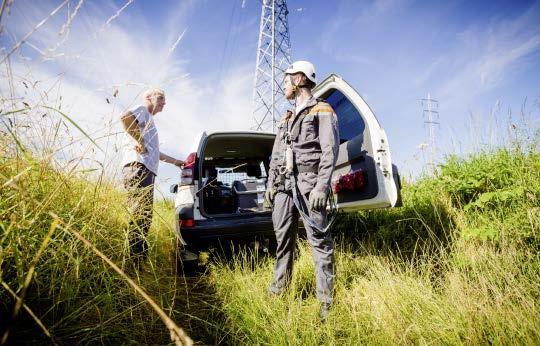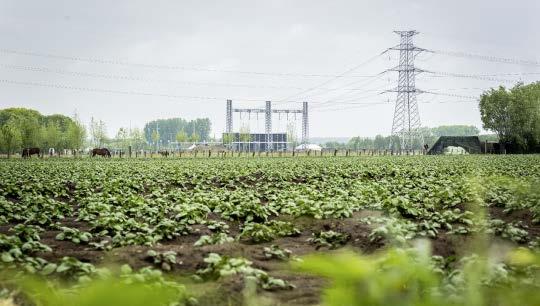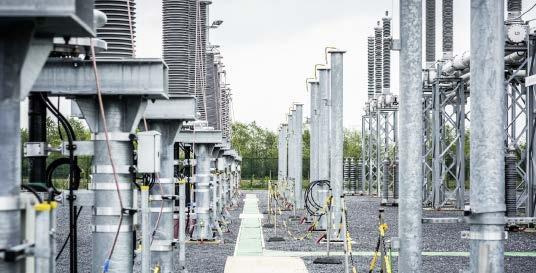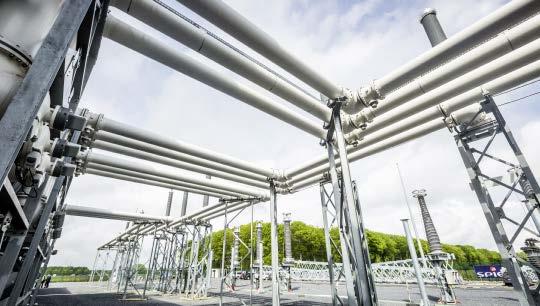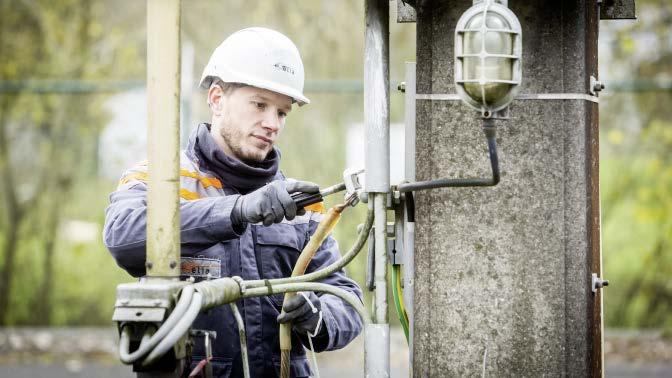
4 minute read
6.1. Methodology and Assumptions
The methodology used in the study is a further development of Elia’s probabilistic, so-called ‘Monte-Carlo’ type model with an hourly time resolution for 34 different climate years, covering a perimeter of 22 countries. Three main scenarios have been quantified: — ‘Base Case’ (BC), a sustainable transition in accordance with the existing EU targets for 2030; — ‘Large Scale RES’ (RES), complementing the ‘Base Case’ scenario mainly with large-scale onshore and offshore wind developments; — ‘Decentral’ (DEC), complementing the ‘Base Case’ scenario with stronger penetration of decentralized solar and local storage devices and consequently a more prominent role for the prosumer. The use of the ‘Large Scale RES’ and ‘Decentral’ scenarios highlights the challenges of setting high decarbonisation targets for the country and Europe. It does not imply any position by Elia on their effective implementation, nor their feasibility. For example: — the ‘Large Scale RES’ scenario assumes a very strong increase of offshore wind up to 4 GW in 2030 and 8 GW in 2040; — The ‘Decentral’ scenario assumes very strong developments of photovoltaics up to 11.6 GW in 2030 and 18 GW in 2040. Concerning the generation mix in the neighbouring countries, the study assumes that generation capacity in those countries will be maintained or developed in order to keep each individual country adequate while taking into account their respective import potential. The import potential for each country takes into account the non-simultaneous nature of peak consumption and the differences in intermittency of wind and sun simulated with a large amount of ‘Monte-Carlo’ years. The grid model is based on the ongoing and firmly decided grid and interconnection reinforcements, bringing the Belgian import/export capacity to 6.500 MW before the nuclear phase-out. Sensitivities with additional interconnection capacity in 2030 and 2040 have been analysed. But in all sensitivities, an import capacity of 6.500 MW was used for the adequacy assessments. The model does not a priori assume a given level of imported energy at the critical moments for system adequacy. Instead, it assumes a given level of simultaneous grid import capacity, distributed over the borders. The actual volumes of imported energy result from the market as they are computed by the model, and depend on the extent to which excess generation capacities are available for export in the other countries. All scenarios respect the legal calendar for the nuclear phaseout. For 2030, a sensitivity has been computed for a 2 GW lifetime extension for 10 years (2025-2035). In all scenarios, significant developments of demand side response and storage facilities have been assumed, up to different and steadily increasing levels as described in more detail in the study. As an example, in the ‘Decentral’ scenario, the DSM shedding capacity is assumed to be 2 GW and 6 GWh/day in DSM shifting. The capacity of storage devices (including stationary batteries, EV batteries and pumped storage) evolves from 3 GW in 2030 to 5 GW in 2040. A sensitivity with 12 GW of storage devices and 31 GWh/day of DSM shifting was also simulated. As regards energy efficiency, the study assumes that it compensates the electricity consumption increase driven by economic growth. Additional electrification in heating and mobility are taken into account. Annual demand is assumed to be around 90 TWh in 2030 and between 90 and 98 TWh in 2040.
The market model focuses on the wholesale market price. In a second step, by comparing the costs of investments with their revenue from the wholesale market, estimates of the additional cost of subsidy mechanisms for renewable energy or for other storage, demand or generation resources (if any) can be made. This second step is not part of the Elia model, but some qualitative insights are given. Since the study focuses on the long-term evolution of the Belgian system in a European context, the model and the study scope have limitations, which are either out of the scope of Elia’s activities or will be the subject of further work: — Distribution costs and constraints, especially regarding the integration of renewables, distributed generation in general and flexibility tools, are not taken into account. — Consequently, the degree of uncertainty surrounding the
‘Decentral’ scenario is higher than for the other scenarios.
The large-scale integration of photovoltaics, with the accompanying strong development of battery systems, is especially subject to technical and economic challenges. — The range of scenarios has been chosen to illustrate pathways towards the decarbonisation of the power sector by 2050. Although the ‘Base Case’ scenario is in line with known policies and objectives, the other two scenarios contain elements for which the feasibility has not yet been fully assessed. Examples are the 8 GW of offshore wind in 2040 in the RES scenario (probably requiring cross-border
North Sea coordination) and the 18 GW PV in the ‘Decentral’ scenario (requiring at least 4 GW of decentralised storage and bringing challenges for integration in the distribution systems). — Since the focus is on the long-term, abstraction has been made to a large extent of constraints imposed by the legal and regulatory framework.

